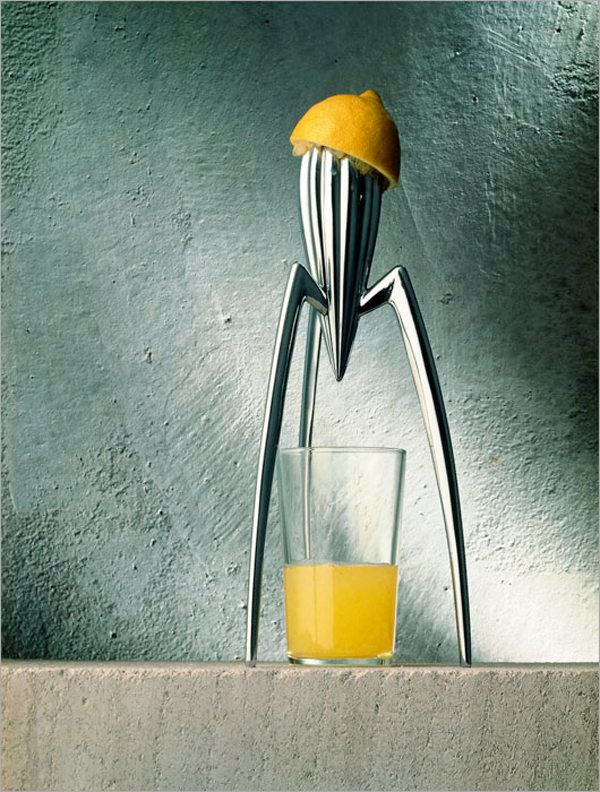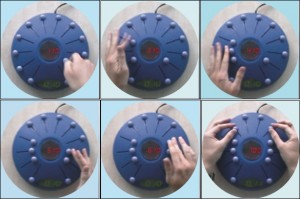1. student presentation on annotated portfolios
2. More on annotated portfolios (week 13)
3. Strong concepts (week 13)
Project : Strong Concepts
identify at least 3 strong concepts of your final projects
also related concepts
deadline 6/4, 2019
參考:
https://interactiontarot.wordpress.com/
2019年5月26日 星期日
2019年5月20日 星期一
week 13. annotated portfolios
1. Bill Gaver, Annotated Portfolios
Final Project warm up:
1. team up (2-3 members in each team)
2. each member collect at least 3 works (toys with rich movements), and annotate the movements, and other qualities first
3. group discuss on the annotations and modify them
4. output as a set of creative cards
5. propose final project based on annotated portfolios
Deadline 2019/5/28
movement study example:
2019年5月13日 星期一
week 12. embodied metaphor & body schema
student presentation on hardware sketch
Embodied metaphors in tangible interaction design
Questions:
1. what is embodied metaphor?
2. what is body schema? what is body image?
3. what is phenomenology of perception?
4. what is perceptual crossing?
1. what is embodied metaphor?
2. what is body schema? what is body image?
3. what is phenomenology of perception?
4. what is perceptual crossing?
2019年4月29日 星期一
week 10. arduino hack and hardware sketching
"sketching in hardware" approach:
Sketching in Hardware and Building Interaction Design: tools, toolkits and an attitude for Interaction Designers
Moussette C, Banks R (2011) Designing through making: exploring the simple haptic design space. In: TEI ’11: Proceedings of the fifth international conference on Tangible, embedded, and embodied interaction, pp. 279–282, ACM
Reference:
EX4:
Sketching in Hardware and Material
1. using arduino, sensors, actuators and other materials (ex., paper, wood, clothe, ...) to perform sketching
2. sketching can be no purpose, no function, no user
3. Take photos, or videos, upload to google drives
4. criteria (評分標準):
evocative
suggest
question
explore
provoke
...
deadline : 5/14, 2019
2019年4月8日 星期一
2019年3月25日 星期一
week 6. metaphor
MusicBottles by Tangible Media Group
I/O Brush by Tangible Media Group
Tech Tap by PEGA design
Just Draw It by PEGA Design
2019年3月18日 星期一
week 5. form review
1. form review (EX3)
2. feature interaction designer: Dan Saffer
Shake to change:
Reference:
Designing Gestural Interfaces by Dan Saffer
2. feature interaction designer: Dan Saffer
Shake to change:
Kyary Pamyu Pamyu ♪ Ninjya Re Bang Bang ☆ au CM Making!
Reference:
Designing Gestural Interfaces by Dan Saffer
2019年3月11日 星期一
week 4. form practice and gestural interaction
Digital Photo Printer re-design from Jasper Dekker on Vimeo.
SWYP: See What You Print from Artefact on Vimeo.
https://www.artefactgroup.com/work/swyp/
http://www.ludwigrensch.com/paper-a-printer-you-actually-want
Re-designing printers:
Berg Little Printer
Paperang Portable thermal printer
Reflexive printer from Benforest on Vimeo.
Dispensing with words
Foam Core
2019年3月4日 星期一
week 3. form making
1.
(original paper in IJDesign by Rung-Tai Lin)
2.
3.

persuasive design
4. A hierarchy of consumer needs by P. Jordan:
(image from http://www.sciencedirect.com/science/article/pii/S1369702103012239)
5. Timo Arnall: A form vocabulary for RFID

https://www.slideshare.net/PeterSam67/designing-with-rfid-4338912
(retrieved from nearfield.org)
(nearfield.org)
6.
"Forms in various materials invite touch and manipulation"
Retrieved from interactions
7.

siteless book sample page
8.

Retrieved from "Move to get moved"
9.
Problems:
1. How to design simple forms for rich interaction? (including movement-centric, social interaction, self-expression, etc.)
2. What's the relationship between movement and form? Can we think "movement" without form?
3. What kind of form is suitable for movement?

4. Echoing "tangible interaction = form + computing" by Mark Baskinger and Mark Gross, if "tangibility = movement + form", how can Tangibility be explored?
5. Affordance: restriction or hint?
Practice:
regarding "functionality" of a music player, pick up 8 representative forms on the above siteless sample page for 8 Effort qualities of LMA. Draw 8 sketches based on the above forms and corresponding movements.

Retrieved from "Move to get moved"
Retrieved from "interactions"
EX3: (2019/3/18)
make a physical model of a music player
(reference: http://ciid.dk/education/portfolio/idp12/courses/tangible-user-interface/projects/)
show the picture of this model on an A2 poster, and analyze according to LMA and gesture patterns (proximity to activate/deactivate, point to activate, rotate to change state, shake to change state...)
perform the movement on the music player with Wizard of Oz method (Bluetooth speakers needed)
Reference: Chapter 4 in Designing Gestural Interfaces
(reference: http://www.trendhunter.com/slideshow/ipod-alternatives)
https://www.slideshare.net/jazzliang/tangible-interaction-2011-spring
(original paper in IJDesign by Rung-Tai Lin)
2.
3.

persuasive design
4. A hierarchy of consumer needs by P. Jordan:
(image from http://www.sciencedirect.com/science/article/pii/S1369702103012239)
5. Timo Arnall: A form vocabulary for RFID

https://www.slideshare.net/PeterSam67/designing-with-rfid-4338912
(retrieved from nearfield.org)
(nearfield.org)
6.
"Forms in various materials invite touch and manipulation"
Retrieved from interactions
7.

siteless book sample page
8.

Retrieved from "Move to get moved"
9.
Problems:
1. How to design simple forms for rich interaction? (including movement-centric, social interaction, self-expression, etc.)
2. What's the relationship between movement and form? Can we think "movement" without form?
3. What kind of form is suitable for movement?

4. Echoing "tangible interaction = form + computing" by Mark Baskinger and Mark Gross, if "tangibility = movement + form", how can Tangibility be explored?
5. Affordance: restriction or hint?
Practice:
regarding "functionality" of a music player, pick up 8 representative forms on the above siteless sample page for 8 Effort qualities of LMA. Draw 8 sketches based on the above forms and corresponding movements.

Retrieved from "Move to get moved"
"Re-routed Radio" projects by industrial design students (a) Nadeem Haidary, (b) Josh Finkle, and (c) Gavin Stewart. These music players were designed to establish new forms of interaction using standard electronics combined with non-traditional materials and expressive physical forms.
Retrieved from "interactions"
EX3: (2019/3/18)
make a physical model of a music player
(reference: http://ciid.dk/education/portfolio/idp12/courses/tangible-user-interface/projects/)
show the picture of this model on an A2 poster, and analyze according to LMA and gesture patterns (proximity to activate/deactivate, point to activate, rotate to change state, shake to change state...)
perform the movement on the music player with Wizard of Oz method (Bluetooth speakers needed)
Reference: Chapter 4 in Designing Gestural Interfaces
(reference: http://www.trendhunter.com/slideshow/ipod-alternatives)
https://www.slideshare.net/jazzliang/tangible-interaction-2011-spring
2019年2月25日 星期一
week 2. movement as expression (EX2)
Simplicity in interaction design
Fonckel by Philip Ross
Ross original paper
dancerail
Alarm clock anticipates sleepers’ emotions
original paper DIS 2002
The emotionally expressive Key Table
physicality of things
Kees Overbeeke
1. What is expression? What is designer's expression? What is user's expression?
2. What is interaction?
3. What is tangible interaction?
4. manipulation vs. expression
5. tool vs. material
6. embodied interaction
7. what are the contrasts of movements?
Music, form, and mutual contrast Practice:
1.
2.
3.
4.
5.
6.
7.
8.
9.
Practice in class:
Draw lines to represent the music form in mutual contrasts
Reference:
Designing Behavior in Interaction: Using Aesthetic Experience as a Mechanism for Design
EX2: (March 12, 2019)
propose at least 4 sets of mutual contrasts of movement
Give form of movement for each set of contrasts
Fonckel by Philip Ross
dancerail
Alarm clock anticipates sleepers’ emotions
original paper DIS 2002
The emotionally expressive Key Table
physicality of things
Kees Overbeeke
1. What is expression? What is designer's expression? What is user's expression?
2. What is interaction?
3. What is tangible interaction?
4. manipulation vs. expression
5. tool vs. material
6. embodied interaction
7. what are the contrasts of movements?
Music, form, and mutual contrast Practice:
1.
2.
3.
4.
5.
6.
7.
8.
9.
Practice in class:
Draw lines to represent the music form in mutual contrasts
Reference:
Designing Behavior in Interaction: Using Aesthetic Experience as a Mechanism for Design
EX2: (March 12, 2019)
propose at least 4 sets of mutual contrasts of movement
Give form of movement for each set of contrasts
2019年2月18日 星期一
week 1. Introduction
Introduction to Tangible Interaction
參考文獻:
1.Caroline Hummels, Kees C. Overbeeke, and Sietske Klooster. 2007. Move to get moved: a search for methods, tools and knowledge to design for expressive and rich movement-based interaction.Personal Ubiquitous Comput. 11, 8 (December 2007), 677-690.
2. Baskinger & Gross, "Tangible = Form + Computing", Interactions, 2010.
3. Heekyoung Jung and Erik Stolterman. 2010. Material probe: exploring materiality of digital artifacts. In Proceedings of the fifth international conference on Tangible, embedded, and embodied interaction (TEI '11). ACM, New York, NY, USA, 153-156.
Similar courses & project sites:
CIID interaction design
MIT Tangible Media Group
Newcastle University Culture Lab
EX1: (2019/3/5)
TOY Probes:
1. collect at least 3 interesting toys (or products) with expressive tangible quality.
2. bring 1 (or more) toy to the classroom for discussion.
3. make your own toy probes, with analysis of the "movements" in each toy.
學習內容:
1. 互動設計基本概論 (1/3)
2. 感測器原理與實作 (1/3)
3. 互動設計專案討論 (1/3)
計分方式:
個人作業(作品、口頭報告、課堂討論) 60%
期末專題(分組) 40%
作業上傳注意事項:
請在 課程google drive 作業一0306資料夾下上傳投影片
請用學號作為檔案名稱
參考文獻:
1.Caroline Hummels, Kees C. Overbeeke, and Sietske Klooster. 2007. Move to get moved: a search for methods, tools and knowledge to design for expressive and rich movement-based interaction.Personal Ubiquitous Comput. 11, 8 (December 2007), 677-690.
2. Baskinger & Gross, "Tangible = Form + Computing", Interactions, 2010.
3. Heekyoung Jung and Erik Stolterman. 2010. Material probe: exploring materiality of digital artifacts. In Proceedings of the fifth international conference on Tangible, embedded, and embodied interaction (TEI '11). ACM, New York, NY, USA, 153-156.
Similar courses & project sites:
CIID interaction design
MIT Tangible Media Group
Newcastle University Culture Lab
EX1: (2019/3/5)
TOY Probes:
1. collect at least 3 interesting toys (or products) with expressive tangible quality.
2. bring 1 (or more) toy to the classroom for discussion.
3. make your own toy probes, with analysis of the "movements" in each toy.
學習內容:
1. 互動設計基本概論 (1/3)
2. 感測器原理與實作 (1/3)
3. 互動設計專案討論 (1/3)
計分方式:
個人作業(作品、口頭報告、課堂討論) 60%
期末專題(分組) 40%
作業上傳注意事項:
請在 課程google drive 作業一0306資料夾下上傳投影片
請用學號作為檔案名稱
訂閱:
文章 (Atom)






















